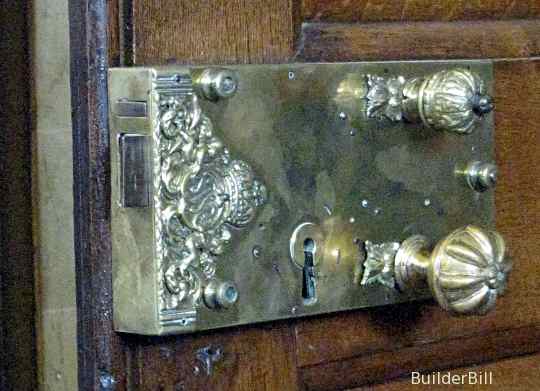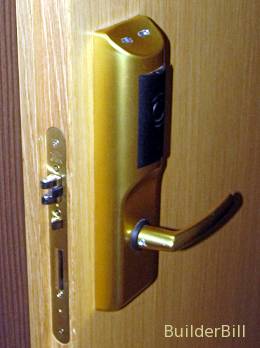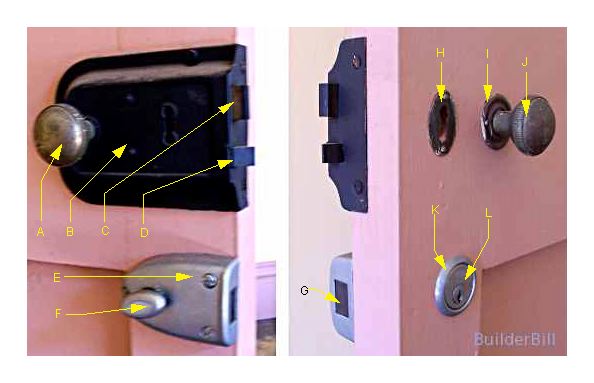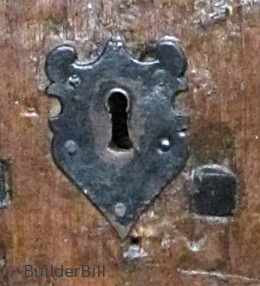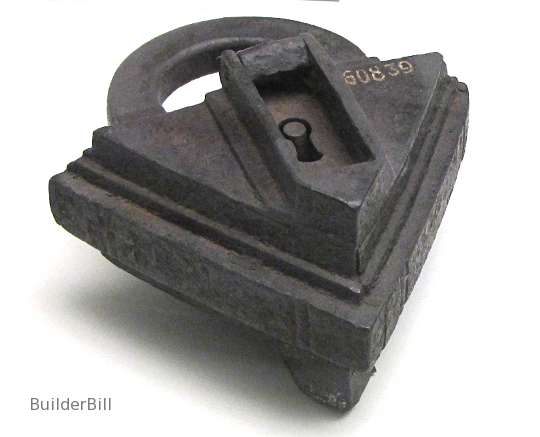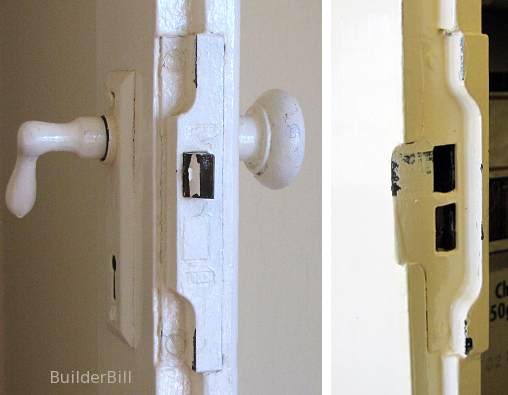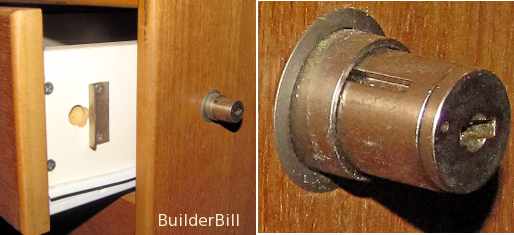 |
|||||||||||||||||
Graphical Construction Glossary >> Doors. >> Door Hardware >> Door Locks
Locks are normally fixed to doors. Strike plates fix to the door frame. The two are inseparable, one without the other is useless. Manufacturers package a lock so that it contains everything needed to fix it, including lock and key, screws and strike plates.
The lock above despite it's age has feature that are still used in locks today.
The top lock here is again a rim lock. It has an enhancement on the old brass one at the top of the page in that the edge of it is wider allowing it to be set into the edge of the door so that two screw are added at right-angles to the other fixing screws giving extra strength. The other lock below is a stand-alone deadlock. This is the generic type of lock and latch that we used to call when I was a lad, a "Y__e Lock". Many other companies now use this design, but credit has to be given where it is due.
The word Escutcheon comes from the medieval term for a shield, particularly in heraldry where it can mean a shield bearing a coat of arms. If you look at the photo of the pink painted door above you will see a small keyhole escutcheon for the rim lock and also below it a cylinder escutcheon. These are an essential part of mounting these types of cylinder. They hold the cylinder in position, cover the hole clearance and transfer the pull of the cylinder mounting screws to the surrounding door.
The padlock above is about a kilogram in weight. even so It wouldn't take a modern thief long to open it. Modern padlocks are a different kettle of fish and can be very sophisticated. Pad locks are used in many applications other than in buildings, but they all have to have some other hardware to make them useful. See the pad bolt on the previous page. Check out the next page for more details on this most important and popular type of lock
The composite photo above shows a rather tired and painted over mortice lock and strike plate for a pair of double doors. It is in a 1930's era house and the style is definitely out of fashion these days. It does serve to illustrate what a Strike Plate is and in this case it also shows what a Rebate Kit looks like.
The tiny lock above is just about all cylinder. There is not much else to it. There is a spring inside the unit that holds the lock in the open position as seen in the photo. To lock it the drawer is closed and the button pressed in and the key turned. This engages the small metal angle that is the receiver. One final word from the author Lee Child. He has his character "Jack Reacher" saying just before he kicked his way into a room, "Door furniture is only as good as the wood it is set into". :-) If you didn't find exactly what you are looking for try this search tool that will search the site and the web. "What can be added to the happiness of a man who is in health, out of debt, and has a clear conscience? "When we build, let us think that we build for ever."John Ruskin 1819-1900 |
Hire Equipment  Furniture Fittings - Architectural Hardware - Electronic Locking Systems - Technical Hardware BuilderBill sponsorship Glossary Pages.Roof Glossary and Roofing Formwork Glossary and other tempory work. Hand Tools Glossary Power Tools Glossary Asbestos Glossary Woodwork Glossary Stair Glossary Concrete Glossary Masonry Glossary doors Glossary BuilderBill Books Building Maths  Stair Design  Asbestos Book |
||||||||||||||||
|
|
|||||||||||||||||
|
Please Note! The information on this site is offered as a guide only! When we are talking about areas where building regulations or safety regulations could exist,the information here could be wrong for your area. It could be out of date! Regulations breed faster than rabbits! You must check your own local conditions. Copyright © Bill Bradley 2007-2012. All rights reserved. |
|||||||||||||||||
